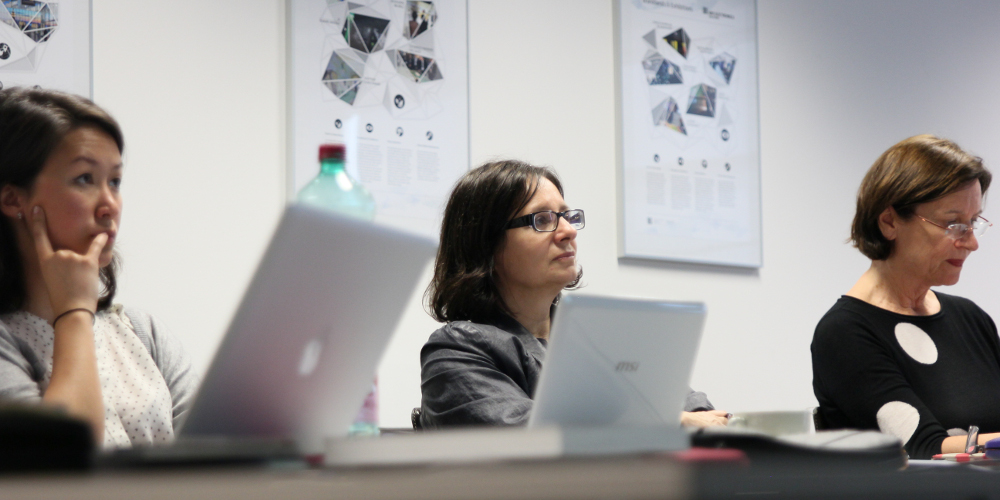The Prix Ars Electronica has staged a competition for young people ever since 1998. In the u19 – CREATE YOUR WORLD category, youngsters under age 19 have the chance to produce and present their concepts and ideas for the world of tomorrow. Sirikit Amann has served as a juror in this category every year since its inception. In fact, she’s often lovingly referred to as u19’s Mom. And this year was no exception. Sirikit Amann studied political science, theater and business; she’s an advisor in artistic and cultural affairs in the Office of the Chancellor of the Republic of Austria. We recently had a chance to chat with her about her unofficial title and what’s changed since this category was initiated.
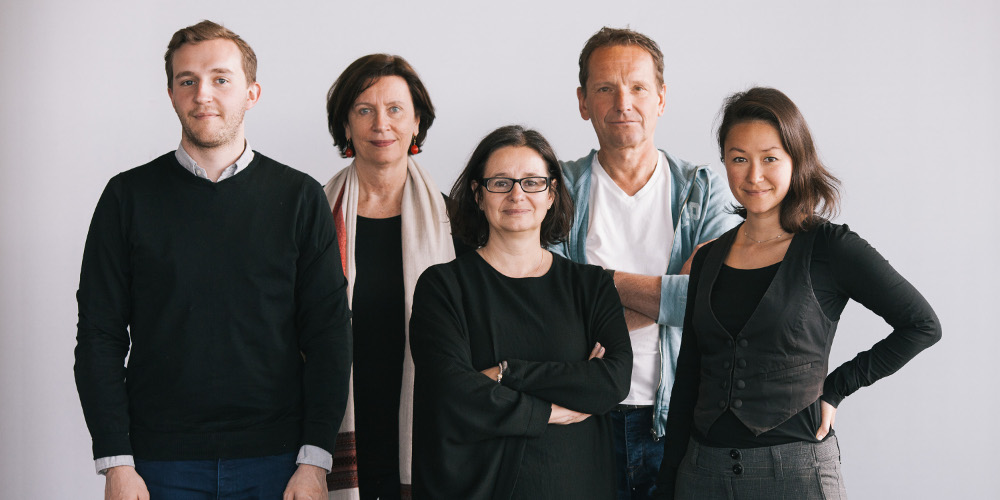 The u19 – CREATE YOUR WORLD jury: (f.l.t.r.) Peter Schernhuber, Elisabeth Menasse-Wiesbauer, Sirikit Amann, Erwin Wagenhofer, Conny Lee. (Credit: Florian Voggeneder)
The u19 – CREATE YOUR WORLD jury: (f.l.t.r.) Peter Schernhuber, Elisabeth Menasse-Wiesbauer, Sirikit Amann, Erwin Wagenhofer, Conny Lee. (Credit: Florian Voggeneder)
Ms. Amann, you’ve been a part of u19 ever since it was launched in 1998. You’re even unofficially referred to as the “mother” of this competition. What do Prix Ars Electronica in general and, of course, u19 in particular, mean to you?
Sirikit Amann: Well, the Prix Ars Electronica is internationally unique—due to its history and time-honored tradition, and because Ars Electronica recognized at a very early stage how new media would change art, the economy and our social coexistence in general. In light of this background, I’m proud indeed to be termed the “Mom” of this Prix Ars Electronica category.
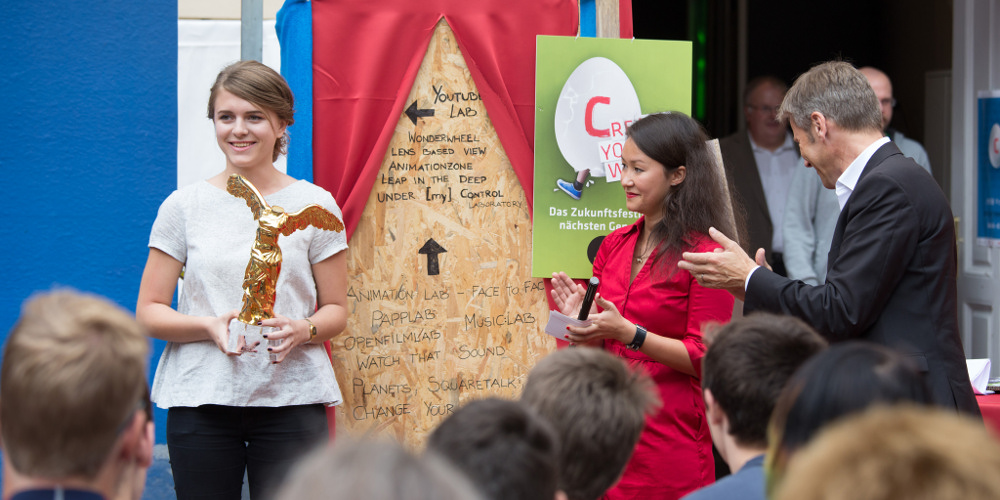 The winner of the category u19 – CREATE YOUR WORLD 2014, Sarah Oos, at the u19-Ceremony. Her project “Femme Chanel – Emma Fenchel” is a video made with found footage—sequences from existing films—that explores the possibilities of recontextualizing this material. (Credit: Tom Mesic)
The winner of the category u19 – CREATE YOUR WORLD 2014, Sarah Oos, at the u19-Ceremony. Her project “Femme Chanel – Emma Fenchel” is a video made with found footage—sequences from existing films—that explores the possibilities of recontextualizing this material. (Credit: Tom Mesic)
Are kids and young people today dealing with different topics than they did 10 years ago?
Sirikit Amann: Yes they are. They’re generally more critical towards the possibilities new technologies offer. The themes that repeatedly surface are all the dark sides of life that youngsters going through puberty are often faced with—lovesickness, ostracism and even thoughts of suicide. What’s new is that the quality as well as the use of high-tech has gotten much more professional than it was 10 years ago.
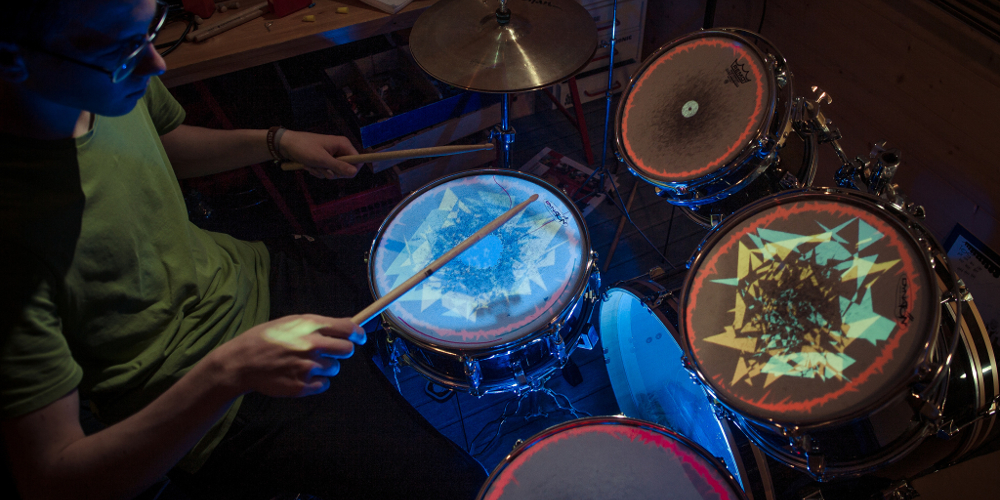 2013 Dominik Koller won the Golden Nica in the category u19 – CREATE YOUR WORLD with his project Visual:Drumset (Credit: Dominik Koller)
2013 Dominik Koller won the Golden Nica in the category u19 – CREATE YOUR WORLD with his project Visual:Drumset (Credit: Dominik Koller)
Do we expect more of young people today because they’ve grown up with all these new technologies and media?
Sirikit Amann: For example, one of this year’s entries is a truly impressive work by a five-year-old. Now, in past years, there certainly have been submissions by such young kids—maybe they used the Windows Paint program to draw a picture at the computer or something like that. But in comparison to them, the work of this five-year-old is really outstanding. He used the computer to create an animated short in which a little figure darts back and forth in a halfpipe. This truly is something extraordinary. When I think back to my childhood, I must say that I was quite a bit older when I could even come close to turning out something like this. So, a lot has changed—above all because the tools are much more affordable and available to just about everyone. Now, due to democratization, even little kids are getting their hands on these tools, and they’re using them more and more intensively because they experiment with them until they understand how these things work. And ultimately, this is what enables them to implement lots of great projects.
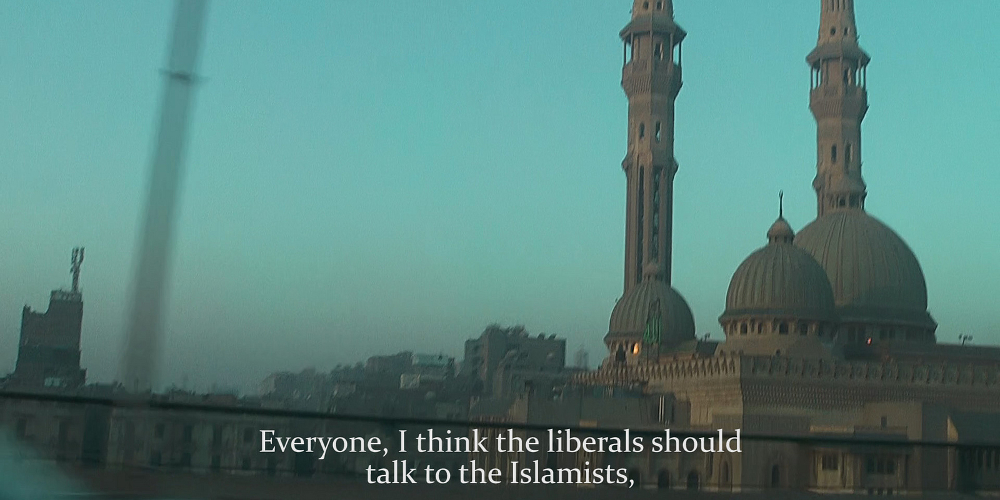 With her work “State of Revolution” Agnes Aistleitner won the first price 2012 (Credit: Agnes Aistleitner)
With her work “State of Revolution” Agnes Aistleitner won the first price 2012 (Credit: Agnes Aistleitner)
How do jurors actually go about comparing works by little kids with those of older u19 entrants?
Sirikit Amann: One difference is, of course, that little kids use simpler technical tools than young people who either learned these techniques in school or have spent years using them at home. But technical sophistication alone isn’t what u19 is all about. What we jurors are looking for is something new and fresh in a work, and it’s really not that important if the image is a little jerky or not absolutely crystal clear. When we see that the particular youngster had a lot of fun independently bringing an idea to fruition, then this has the same value as a really brilliantly programmed technical application or an elaborate, polished animated short.
We don’t concentrate strictly on what the results look like; we also take into account the emotions it imparts to us.
What other factors do you consider when evaluating an entry?
Sirikit Amann: We want the projects that make it into the top 15—and are thus described in the catalog and presented at the Ars Electronica Festival—to reflect the entire spectrum of entries. That means, for example, that if we receive animated films, then at least one of them should make the top 15. Moreover, all the respective age groups should be represented. There should be some very young children among the winners, and not just individual works—some group efforts should be singled out for recognition too. So we pay close attention to diversity in judging submissions.
In contrast to other Prix Ars Electronica categories, we have a special situation here in that our artists outgrow us, so to speak. We can evaluate only what we have before us at the moment, and not, like in other categories, also assess the works a particular artist already submitted in prior years and whether there’s been an improvement or not. But we regard this as something positive because we get a fresh start every year and compare only what we’ve received from kids and young people this year. And we don’t say things like: “Last year, I saw a work just like this and I thought it was a lot better (or worse).” Something like that doesn’t happen in this category and I attach great importance to this, simply because I think every work should receive precisely the consideration it deserves. Of course, when similar works are received in the same year, then we compare them to each other and the jurors consider the innovative aspects of each such work. Is this a case of more-of-the-same or is it something that could perhaps improve our life a bit. After all, it’s by no means a coincidence that u19’s epithet is Create Your World! That’s why it’s important that the prizewinning projects make some sort of impact on young people’s world—changing it, improving it or simplifying it.
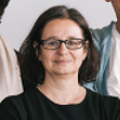
Sirikit Amann was born in 1961. She studied political science, theater and economics in Vienna. Since the ‘80s, her activities in Austria and abroad have been focused on the interface of culture, education and new media: Until 2007 she has been a division manager for cultural education at KulturKontakt Austria. 2008 she transfered in the newly-established staff position for artistic and cultural education at the Austrian Federal Ministry of Education, Art and Culture. Since then she works as an adviser in the office of the Federal Minister for Art and Culture. For the Prix Ars Electronica she curates the Young Animation and is an u19 juror since that category’s inception.
More information about the Prix Ars Electronica 2015: https://ars.electronica.art/prix/
On May 26, 2015 this year’s recipients of the coveted Golden Nicas will be announced in a press conference.
